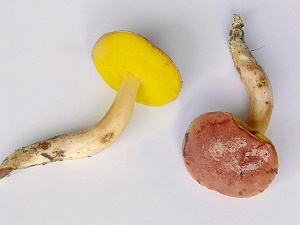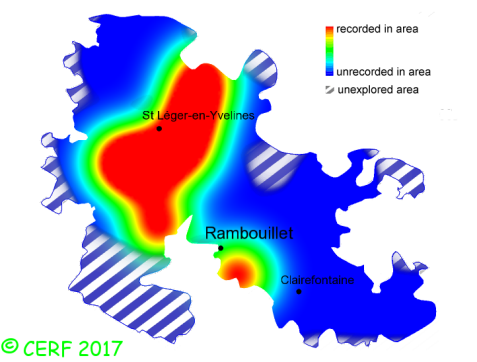| Aureoboletus gentilis (Quél.) Pouzar |
|
|
|
|
|
|
The cap is pink-brown to flesh-pink, hemispherical, then convex, more or less flattened. The cap surface is viscid, with fine wrinkles, can be partly separated. The cap margin is slightly overhanging, inrolled. The stem is slimy in wet weather, more or less rooting, with a pointy base, full, sometimes sinuate or thin, without any network. Its colour is yellow at the top, then buff to pink at the bottom. The mycelium appearing at its base is white.. The flesh is thick, firm, whitish with a tinge of pink under the cap surface, and a tinge of yellow at the base of the stem and above the tubes; its taste is slightly acidic, pleasant; the odour is fruity, pleasant, weak; The tubes are adnate and rather short (4-8mm), easily removed from cap, often weeping in young specimens. They are lemon yellow then golden yellow, not turning blue when exposed to air. The pores are quite large (1,3mm), angular and irregular, yellow (concolorous to tubes), not turning blue when pressed. The spore print is olive brown. It grows on old bonfire sites, in broad-leaved or mixed woods, in well ventilated areas, pathsides, clearings, with oak. The fruiting period takes place from July to November.
Distinctive features : viscid flesh-pink cap; golden-yellow pores, unchanging when pressed; viscid yellow stem Aureoboletus gentilis is quite rare and localised in the forest of Rambouillet, and is quite rare, more generally speaking . | ||
|
page updated on 14/01/18

